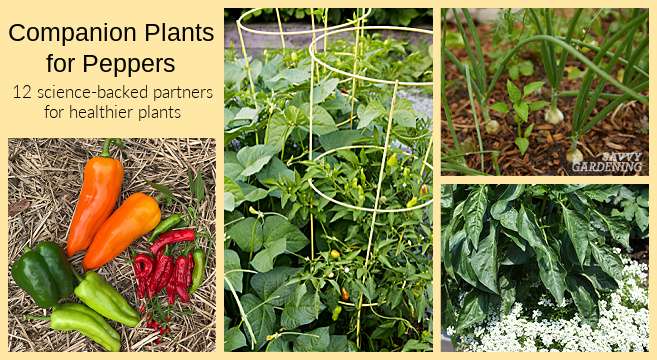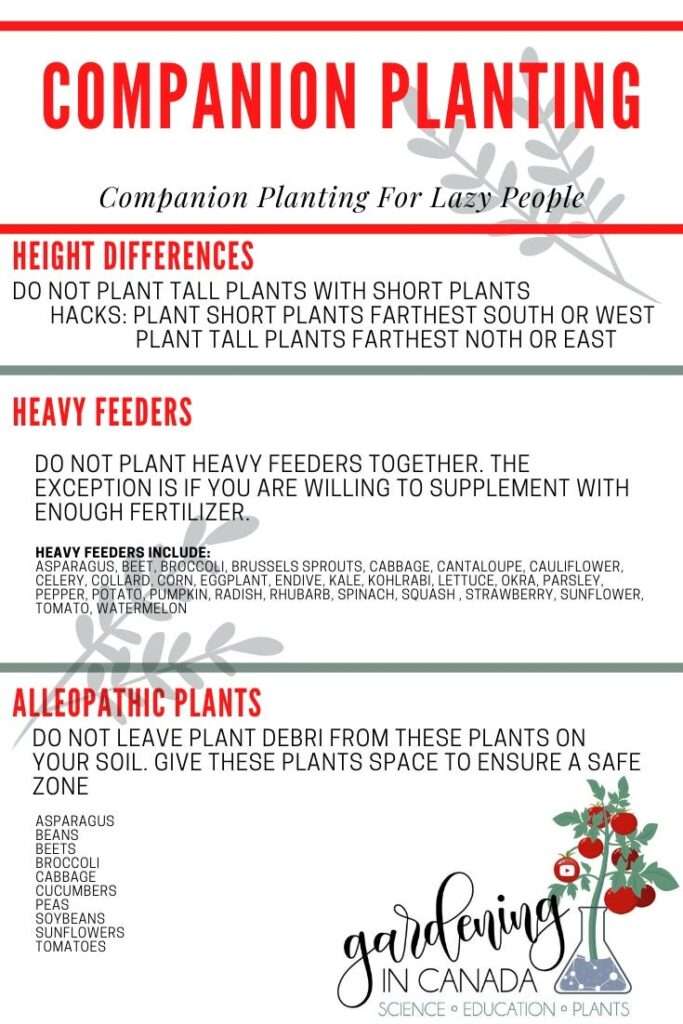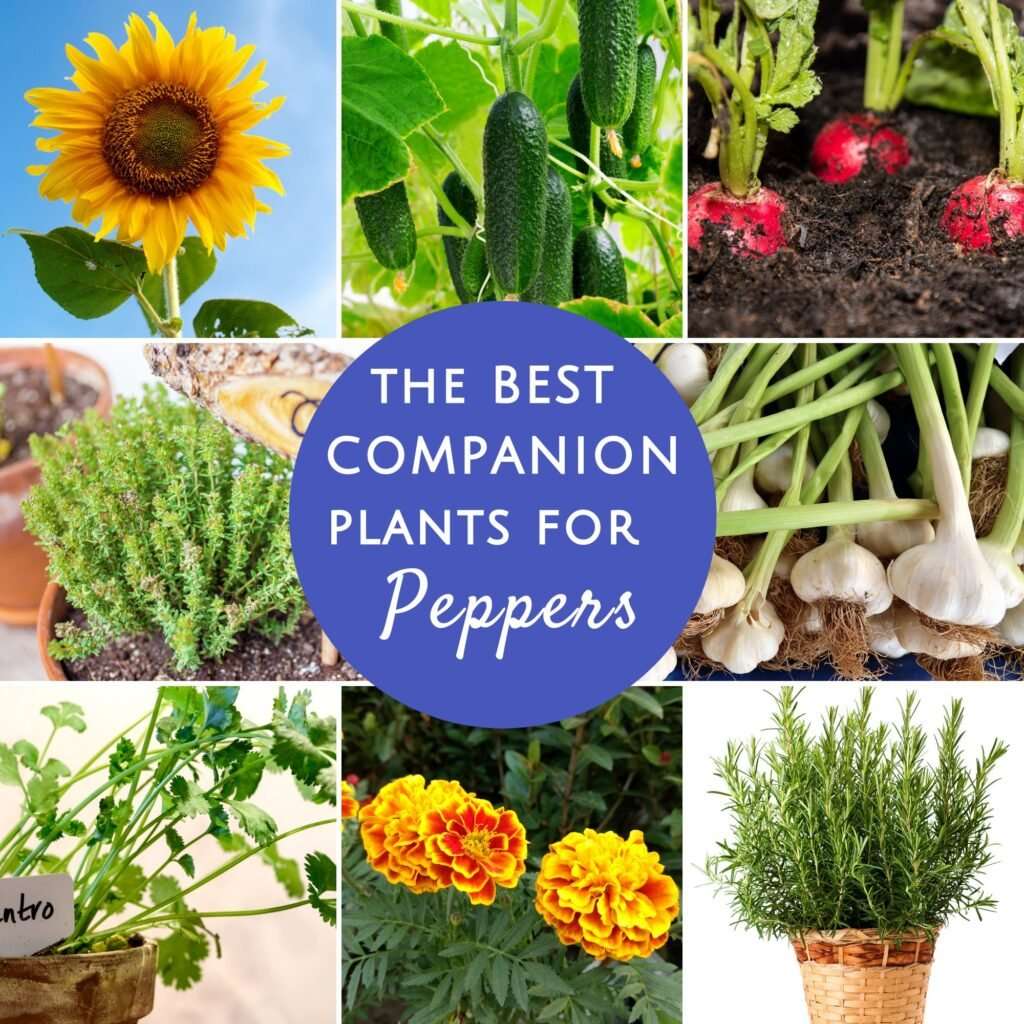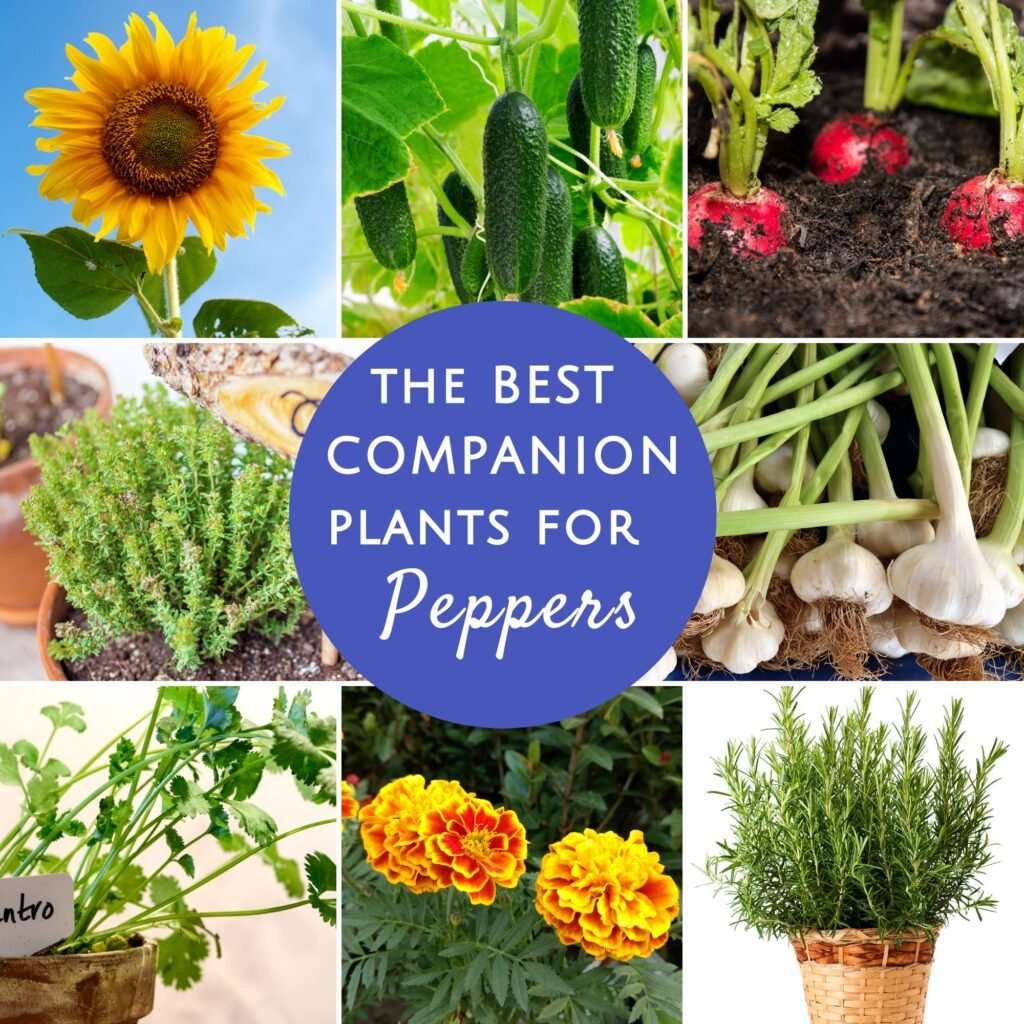Hello there! In this article, we’ll be exploring the interesting topic of companion planting and why it is important for the growth of peppers and beans in your garden. We’ll discuss how certain plants can benefit each other when planted together, and why it is not recommended to plant peppers next to beans. By the end, you’ll have a better understanding of the potential impact of companion planting on your garden and how to optimize the growth of both peppers and beans. So, let’s get started!

Why companion planting matters for peppers and beans in your garden
Companion planting is a gardening technique that involves planting different species of plants together to promote healthy growth and increase productivity. By strategically selecting companion plants for your peppers and beans, you can enhance their overall health, deter pests, improve soil fertility, and optimize nutrient cycling. In this article, we will delve into the importance of companion planting, explore suitable companions for peppers and beans, discuss the benefits of this practice, and provide tips for successful coexistence. So, let’s dig deeper into the world of companion planting and understand why it matters for the success of peppers and beans in your garden.
Understanding the Importance of Companion Planting
Companion planting is an age-old practice that harnesses the power of symbiotic relationships between different plant species. It aims to maximize the effectiveness of garden space, promote biodiversity, and create a balanced ecosystem. By combining specific plants, you can create a synergy that enhances the health and productivity of your garden.
Companion planting is particularly crucial for peppers and beans. These two plants have a unique relationship that can greatly benefit from thoughtful companion selections. By understanding how companion planting can promote healthy growth and increase yield, you can unlock the full potential of your garden.
How Companion Planting Promotes Healthy Growth and Yield
Companion planting offers several key benefits that can contribute to the healthy growth and increased yield of both peppers and beans. Some of these benefits include improved soil fertility, natural pest control, shade, and support. Let’s explore these advantages further.
Improved Soil Fertility through Nutrient Cycling
Companion planting allows for efficient nutrient cycling in the soil. Some plants, such as legumes like beans, have the ability to fix nitrogen from the air and convert it into a form that is readily available to other plants. Peppers, on the other hand, have high nitrogen requirements. By planting beans alongside peppers, you can provide a natural source of nitrogen for the peppers, promoting their healthy growth and overall productivity.
Natural Pest Control with Beneficial Insects
Certain plants have natural pest-repellent properties or attract beneficial insects that prey on pests. By incorporating these plants as companions for peppers and beans, you can effectively control pests without relying on chemical pesticides. Marigolds, for example, are known to deter harmful pests such as nematodes, aphids, and whiteflies. Basil, on the other hand, can repel mosquitoes and flies while enhancing the growth and flavor of peppers and beans.
Shade and Support for Optimal Growth
Some companion plants can provide shade and support for peppers and beans, ensuring their optimal growth. Cucumbers, known for their sprawling nature, can spread along the ground and provide shade for the roots of peppers and beans. This shade helps regulate soil temperature, prevents excessive evaporation, and reduces weed growth. Additionally, corn can act as a natural trellis for beans, allowing them to climb and utilize vertical space efficiently.
Companions for Peppers and Beans: A Crucial Pairing
Now that we understand the importance and benefits of companion planting, let’s explore some suitable companions for peppers and beans individually.
Identifying Suitable Companions for Peppers
When selecting companion plants for peppers, it is important to consider those that can deter pests, enhance growth, and improve overall garden health. Here are some suitable companions for peppers:
Marigolds: A Reliable Pest Deterrent
Marigolds are often referred to as the “protector” plant due to their ability to deter pests. Their strong smell repels aphids, nematodes, and other harmful insects, effectively protecting the peppers from infestations. Marigolds can be planted around the perimeter of your pepper bed or interspersed between the peppers.
Basil: Enhancing Growth and Flavor
Basil not only enhances the flavor of peppers when grown together but it also acts as a natural pest repellent. The strong scent of basil deters flies, mosquitoes, and other garden pests. Planting basil alongside peppers can help in pest control while promoting the healthy growth of both plants.
Cucumbers: Aiding in Pest Management
Cucumbers provide shade for the roots of peppers, helping in moisture retention and weed suppression. Additionally, they serve as a beneficial trap crop, attracting pests like cucumber beetles away from peppers. Planting cucumbers near peppers can provide both shade and pest management benefits.
Choosing Ideal Companions for Beans
Beans thrive when planted alongside suitable companions that offer support, pest control, and improved soil structure. Here are some ideal companions for beans:
Corn: Providing Vertical Support and Nutrient Exchange
Corn can act as a natural trellis for beans, providing them with vertical support for climbing. This vertical growth not only optimizes space but also enhances air circulation, reducing the risk of diseases. Furthermore, beans fix nitrogen in the soil, benefiting the nitrogen-hungry corn plants growing nearby.
Summer Savory: Repelling Harmful Insects
Summer savory is a herb known for its strong aroma, which repels bean beetles and other harmful insects. Planting summer savory alongside beans can help deter pests naturally and protect the health of your bean plants.
Radishes: Improving Soil Structure
Radishes have long taproots that help break up compacted soil and improve its structure. By planting radishes alongside beans, you can create channels for better water and nutrient penetration into the soil. This improved soil structure promotes healthy root development and overall plant growth.
Understanding the Pepper and Bean Relationship
Peppers and beans have a unique relationship that can greatly impact their growth and productivity. Understanding the various factors that influence this relationship is key to successful companion planting.
The Role of Nitrogen Fixation in Bean Growth
Beans belong to the legume family, which has the unique ability to fix nitrogen from the air and convert it into a form that is usable by plants. This nitrogen fixation process benefits not only the beans themselves but also other plants growing nearby, such as peppers. By planting beans alongside peppers, you can provide a natural source of nitrogen, promoting the healthy growth of both plants.
Allelopathy: Chemical Interactions between Peppers and Beans
Allelopathy refers to the chemical interactions between plants that can have either positive or negative effects. In the case of peppers and beans, there are some allelopathic effects that can influence their growth. While peppers release certain compounds that can inhibit the germination and growth of beans, these effects can be mitigated by providing sufficient spacing between the plants.
Competitive Resource Utilization
Peppers and beans compete for resources such as water, nutrients, and sunlight. When planted too closely together, they can struggle to access these resources, leading to stunted growth and reduced yield. Proper spacing and companion selections are crucial to ensure each plant has sufficient access to resources for optimal growth.
Negative Interactions between Peppers and Beans
While the relationship between peppers and beans can be beneficial, there are some negative interactions that should be considered when companion planting them. These interactions can lead to stunted growth, reduced nutrient availability, and increased susceptibility to diseases. Here are some negative interactions to be aware of:
Stunted Growth and Reduced Yield in Close Proximity
When peppers and beans are planted too closely together, they can compete for resources and inhibit each other’s growth. This competition can result in stunted growth and reduced yield for both plants. It is important to maintain sufficient spacing between peppers and beans to minimize interference.
Inhibition of Nutrient Availability
Peppers and beans have different nutrient requirements. If planted too closely together, one plant may outcompete the other for nutrients, leading to nutrient deficiencies and compromised growth. Proper spacing and careful consideration of nutrient needs are essential to avoid nutrient availability inhibition.
Increased Susceptibility to Disease
Planting peppers and beans in close proximity can create a favorable environment for the spread of diseases. If one plant becomes infected, the close proximity can facilitate the spread of pathogens to the other plant. Providing adequate airflow and spacing between peppers and beans can minimize the risk of disease transmission.
Optimal Planting Arrangements for Peppers and Beans
To ensure the success of companion planting with peppers and beans, it is crucial to consider optimal planting arrangements. Proper spacing, strategic placement, and implementation of companion planting techniques are key to minimizing negative interactions and maximizing benefits. Let’s explore some guidelines for achieving optimal planting arrangements.
Maintaining Sufficient Spacing to Minimize Interference
To avoid competition for resources and negative interactions, it is important to maintain sufficient spacing between peppers and beans. As a general rule of thumb, ensure a distance of at least 18 inches between pepper plants and bean rows. This spacing allows each plant to access the resources it needs for healthy growth.
Implementing Companion Planting Techniques
When planting peppers and beans together, consider implementing companion planting techniques such as intercropping. Intercropping involves growing different crops in close proximity to maximize space utilization and create synergistic relationships. For example, you can plant marigolds between the rows of peppers and beans to effectively deter pests.
Intercropping with Beneficial Companions
In addition to companion plants specifically chosen for peppers and beans, consider intercropping with other beneficial companions. For instance, planting onions or garlic near peppers can help deter pests like aphids and spider mites. The key is to select companions that provide additional benefits while avoiding negative interactions.
Companion Planting Tips for Successful Coexistence
To ensure a successful coexistence between peppers and beans, here are some companion planting tips to keep in mind:
Complementary Planting Schedule
Consider the planting schedules of peppers and beans to ensure they are compatible. While beans are typically fast-growing and can be directly sown into the ground, peppers may require an earlier start indoors to allow for proper germination and growth. Plan your planting schedule accordingly to ensure the best conditions for both crops.
Observing Plant Compatibility and Growth Habits
When selecting companion plants, consider their compatibility and growth habits. Look for plants that have similar sun, water, and nutrient requirements to ensure harmonious coexistence. Additionally, consider factors such as height and spread to avoid overcrowding and interference.
Crop Rotation and Succession Planting
To maintain the health of your garden and minimize the risk of diseases and pests, practice crop rotation and succession planting. Avoid planting peppers and beans in the same location year after year to break disease cycles and prevent nutrient depletion. Rotate your crops and consider succession planting to optimize space utilization and maximize productivity.

Common Mistakes to Avoid when Companion Planting
To make the most of your companion planting efforts, it is important to avoid common mistakes that can hinder the success of your garden. Here are some mistakes to steer clear of:
Overcrowding and Poor Spacing
One of the most common mistakes in companion planting is overcrowding and poor spacing. Plants need sufficient room to grow, access resources, and avoid competition. Be mindful of spacing requirements and resist the temptation to overcrowd your garden.
Planting Incompatible Companions
Carefully research and select compatible companions for peppers and beans. Avoid planting companions that have negative interactions or compete for resources. Take the time to understand the needs and growth habits of different plants to make informed choices.
Neglecting Pest and Disease Prevention
Companion planting is a great tool for natural pest and disease control. However, it is important to remember that it is not a foolproof solution. Regular monitoring, implementing appropriate prevention measures, and addressing pest and disease issues promptly are crucial for maintaining a healthy garden. Do not solely rely on companion planting without proper pest and disease prevention strategies.
Maximizing Garden Productivity with Companion Planting
Companion planting offers numerous benefits that can maximize the productivity and overall success of your garden. By harnessing the power of symbiotic relationships between plants, you can achieve efficient space utilization, reduce reliance on chemical pesticides and fertilizers, and enhance overall biodiversity and ecological balance.
Efficient Space Utilization for Increased Yield
Companion planting allows you to utilize your garden space more efficiently. By intercropping and strategically planting compatible companions, you can optimize the use of available space and grow more plants in a limited area. This efficient space utilization leads to increased yield and productivity.
Reduced Reliance on Chemical Pesticides and Fertilizers
Companion planting can significantly reduce the reliance on chemical pesticides and fertilizers. By selecting pest-repellent companions, attracting beneficial insects, and utilizing nutrient cycling, you can create a naturally balanced ecosystem that minimizes the need for synthetic inputs. This not only benefits the environment but also promotes healthier and more sustainable gardening practices.
Enhanced Biodiversity and Ecological Balance
Companion planting promotes biodiversity and ecological balance in your garden. By diversifying your plantings and attracting a variety of beneficial insects, you create a thriving ecosystem that supports the health and vitality of your garden. This enhanced biodiversity contributes to pest control, pollination, and overall ecosystem resilience.

Conclusion: Harnessing the Power of Companion Planting
Companion planting is a powerful tool that can transform your garden, especially when it comes to peppers and beans. By understanding the importance, benefits, and techniques of companion planting, you can create a harmonious garden that promotes healthy growth and maximizes productivity. Remember to select suitable companions, maintain proper spacing, and observe best practices for optimal results.
So, the next time you plan your garden, consider the power of companion planting. By choosing the right companions for your peppers and beans, you can create a thriving ecosystem that not only benefits your plants but also enhances the beauty and sustainability of your garden. Happy companion planting!





